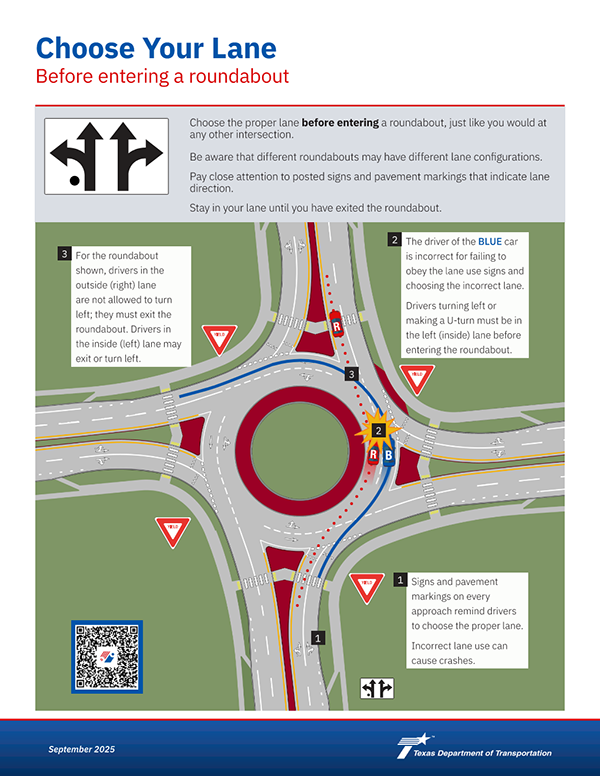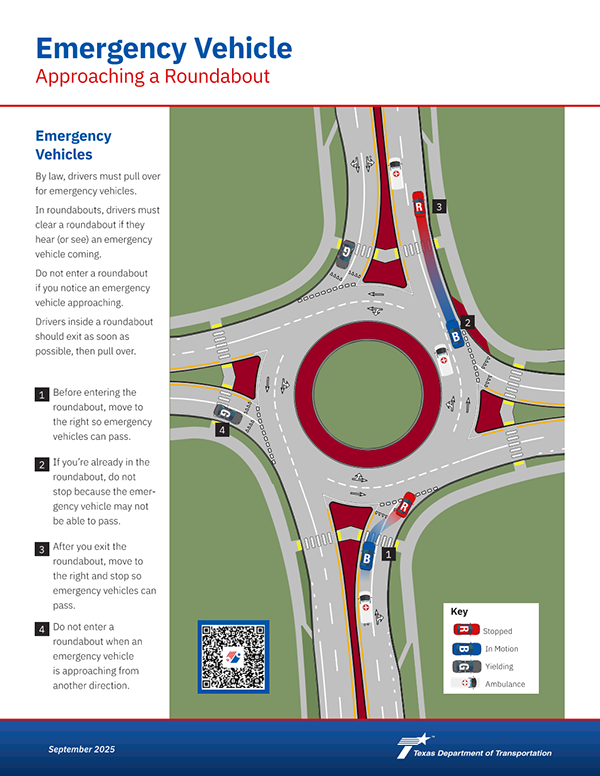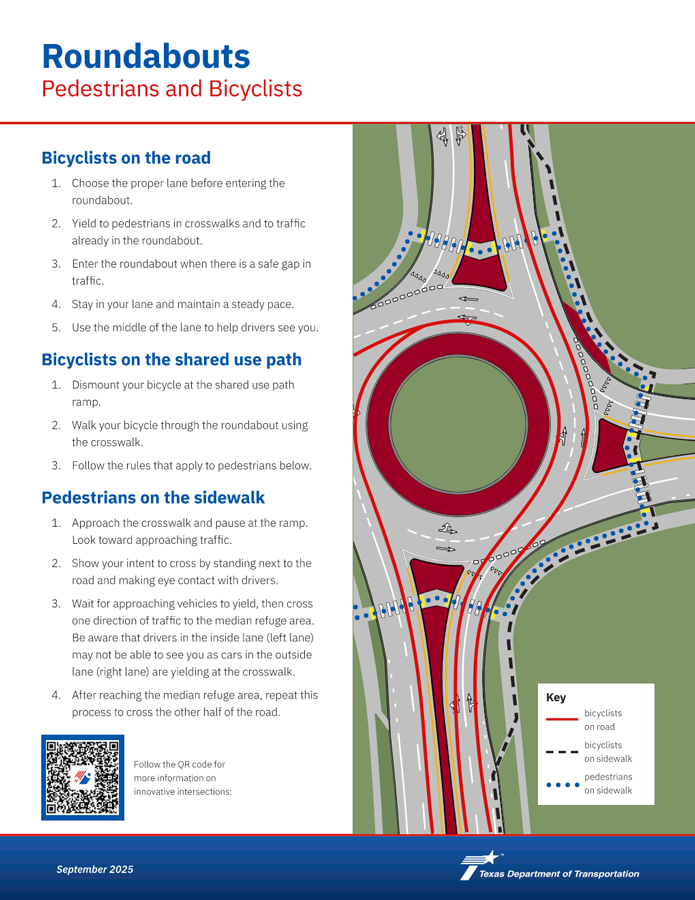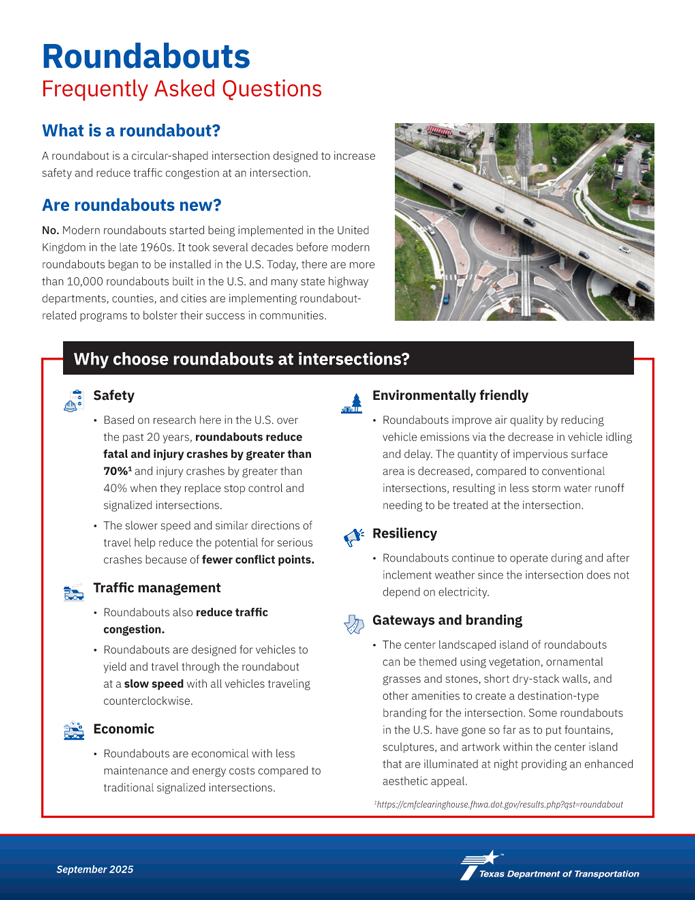Innovative Intersections

What is a roundabout?
A modern roundabout is a circular intersection where traffic moves counterclockwise around a central island. Vehicles entering the roundabout must yield to those already circulating.
Roundabouts can be used in both urban and rural settings and come in several configurations such as mini, single-lane, and multi-lane.

Mini roundabout

Single-lane roundabout

Multi-lane roundabout
Design principles
The modern roundabout is characterized by the following basic principles:
Shape
Generally circular shape with counterclockwise traffic flow
Yield-at-Entry
Vehicles approaching the roundabout must wait for a gap in the circulating flow, or yield, before entering the circle
Slow speeds
Through geometric curvature and deflection, traffic is directed or channeled to the right with a curved entry path into the circulatory roadway.
Design characteristics
Roundabouts are a versatile choice for intersection control because the geometry can be modified to suit the constraints of each intersection. While roundabout geometry is flexible, there are certain design characteristics that all roundabouts share and some that are site dependent.

Common to all roundabouts
Directs vehicles around circulating lane
Separates approach and exit lanes in advance of the intersection
Improves intersection visibility and provides needed information to intersection users.
Site dependent
Accommodates large vehicle trailers
Accommodates pedestrians and bicyclists
Can be used to enhance intersection visibility and beauty
Benefits of roundabouts

Enhanced safety
- Roundabouts reduce fatalities by 90% by eliminating crossing conflict points.
- Roundabouts significantly reduce the total number of conflict points in an intersection, which means fewer opportunities for crashes.
- Slower vehicle speeds give drivers more time to make decisions.
- Slower vehicle speeds improve pedestrian and cyclist outcomes when a crash does occur.
- Roundabouts improve traffic flow by using a yield-on-entry system.
- Drivers only need to come to a stop when there isn’t enough room for them to safely enter the intersection.
- Less stopping means fewer delays and less congestion.
- Roundabouts operate without power, functioning during outages and freeing emergency crews to focus on signalized intersections.
- Roundabouts offer spaces for landscaping, hardscaping, signage, or public art, allowing for collaboration with local agencies to enhance community character.
- Roundabouts allow continuous traffic flow, reducing vehicle idle times and fuel consumption.








